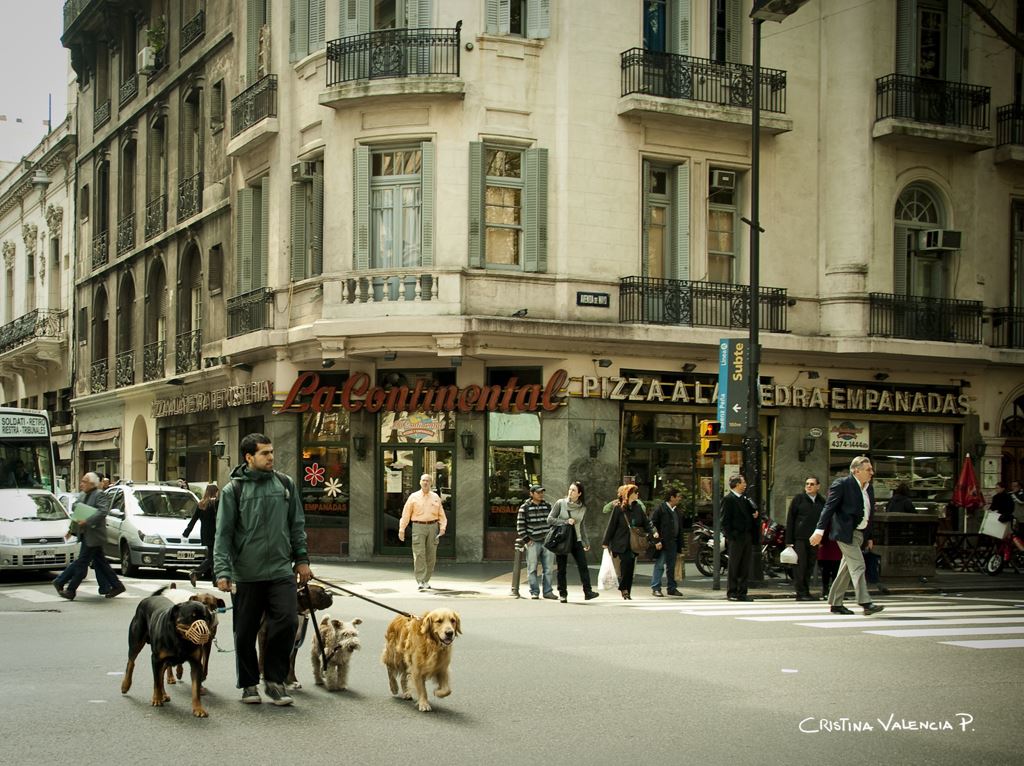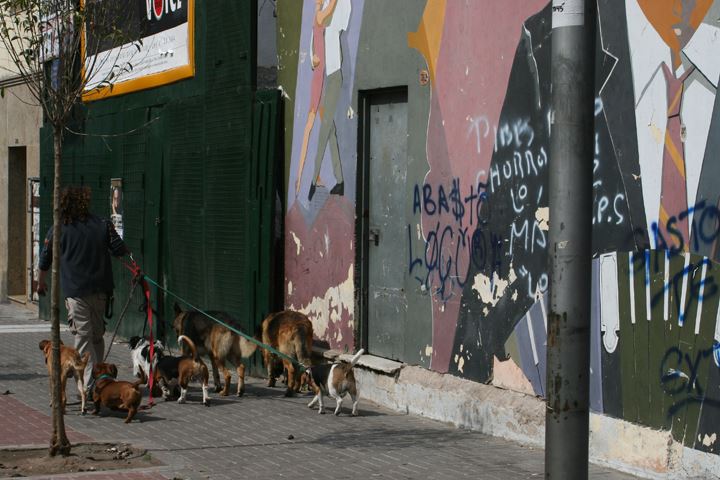Everyone knows that Buenos Aires is a magnificent, surprising and varied city which is full to bursting with cultural and culinary highlights. But one thing most visitors aren’t prepared for is the dog walkers or paseadores de perros, to give them their full name.
In the parks and plazas of affluent areas like Palermo and Recoleta it is common to see men and women walking veritable packs of well-breed mutts. Some walkers specialize in small dogs, or even in a certain breed, but most seem to herd varied flocks of medium to large hounds. As the owner of two unruly crossbreeds, I marvel at how these professionals calmly walk so many animals at the same time.
Section Type: standardWidthImageS
Photo: Cristina Valencia

Employing a paseaperro is a status symbol for rich porteños (“What? You walk your own dog? How scandalous!”) and these days the best dogwalkers don’t just walk the dogs, they actually look after them for the whole day and even take them for medical check-ups and grooming appointments.
In the heyday of the early 2000s, some walkers would have as many as 25 or even 30 dogs in their charge, but new municipal regulations have capped it at 8 dogs per human.
Section Type: imageOnLeftParagraphToRight
One area which the rules – and the paseaperros – seem to avoid like a nimble commuter sporting expensive brogues, is that of excrement. An article published last year estimated that 70 tons of dog poop are added to the streets and plazas of the Argentine capital every day. And very few people are doing anything about it. For once the conventional logic does not apply: doo look down!
Photo: April Killingsworth

Credit to Dan DeLuca for the cover photo of this post.

 South America
South America South America
South America